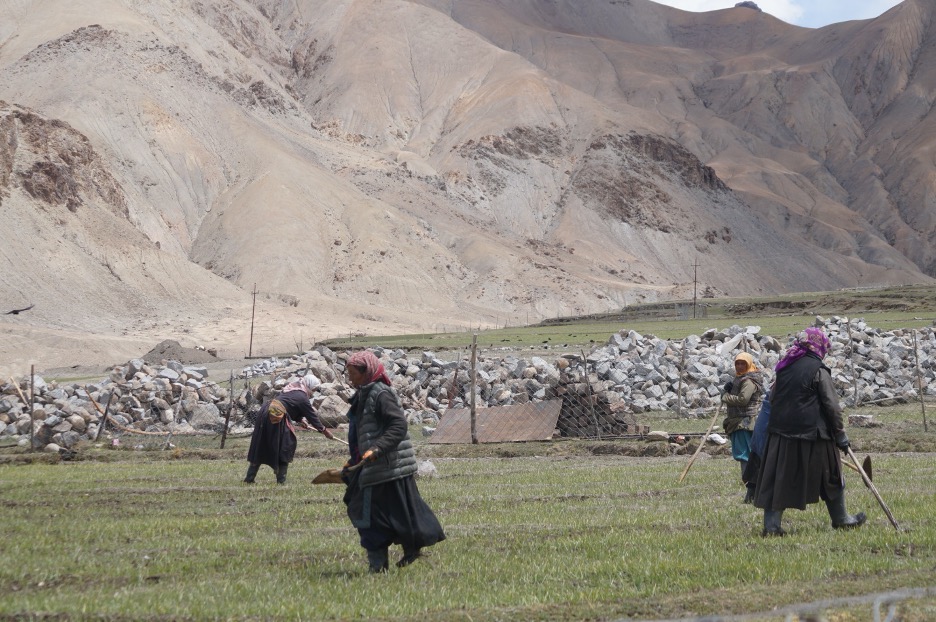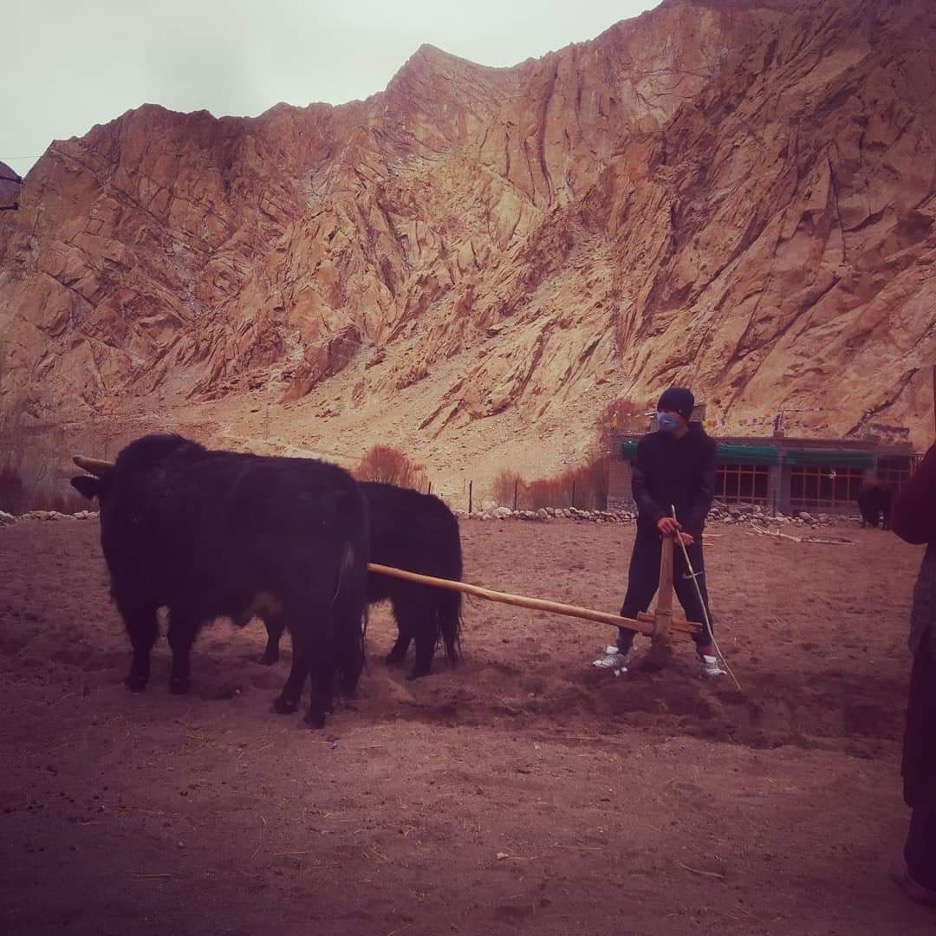Ladakh to go fully organic by 2025
People have realised that organic farming is the way forward. The government is also taking initiatives which will help people living in this hilly region to be economically and environmentally strong

Leh, Ladakh
For the past few years, the word ‘organic’ has been the buzz word as people across the globe have started taking steps to restrict the intake of synthesised agricultural produce. There has been a sudden increase in the supply and demand of a wide range of organic products – cereals and millets, oilseeds, sugar, tea, fruit juice concentrates, spices, pulses, dry fruits etc.
This upsurge has certainly benefitted the Indian market as, according to a report published in The Economic Times, India exported organic products worth $515 million in the financial year 2017-18, from $370 million in 2016-17, registering an increase of 39%. The total volume of export during 2017-18 was 4.58 lakh tonne”.
According to this report, Madhya Pradesh had covered the largest area under organic certification, followed by Rajasthan, Maharashtra and Uttar Pradesh. Ladakh, the newly-announced Union Territory, is also preparing to become an emerging player in this segment by putting its traditional knowledge of organic farming to use.
Ladakh, known to the world for its high passes and scenic beauty, attracts thousands of tourists — both domestic and foreign — every year. The lush green agriculture fields add hues to this otherwise arid land. Representative of the Himalayan agriculture, the traditional way of agriculture has helped the region self-sustain for decades before it became a tourist destination.

The newly-built infrastructure allowed the influx of tourists that resulted in the creation of new job opportunities. It lessened the dependency of locals on agriculture. Prior to this, only organic farming was practiced which involved crop rotations, crop residues, animal manures, off-farm organic waste for nutrient mobilisation and plant protection, etc. It promoted biodiversity and agro-ecosystem health as mentioned in the paper “Organic Farming Enlivening the Ladakh Subsistence Agricultural System” published in the International Journal of Current Microbiology and Applied Sciences in 2019.
Today, due to the supply of ration at subsidised rates, employment opportunities in the Army and other government departments, the ever-flourishing tourism business and the fascination of the younger generation towards it, has made agriculture less lucrative. This shift has decreased the availability of human resources, which is essential for undertaking farming in rural regions. Agriculture has now become the responsibility of the older generation and women.
However, an increase in demand for organic products has made many locals — who not only want to earn money, but also have the desire to conserve the decade-old traditional ways of Ladakhi agricultural practices — hopeful. The local government has also roped them in by introducing these enthusiasts to farming techniques that can be seen as a blend between the traditional and the modern.
As a result, under the Ladakh Organic Mission 2025, a memorandum of understanding (MoU) was signed and exchanged between the Sikkim State Organic Certification Agency (SSOCA), Sikkim, and the Department of Agriculture, Hill Council, Leh, last year under which it was decided to practice only organic farming in the Leh district for the next five years. For this, the locals have started receiving training in Sikkim already.

Shakeel who works at the Agriculture Department, Leh, and is an agricultural expert believes that it is about time that the Ladakhis return to organic farming or else their sustainability will be under great threat. “The new approach of farming should be a blend of traditional practices and scientific technologies wherein one can get the maximum benefit through crop production. With the aim of transforming Leh into an organic region by 2025, it is crucial to integrate all the components of agriculture – organic farming, dairy farming, poultry, sheep and goat rearing. Everything needs to come together to make the initiative successful and sustainable,” said Shakeel emphasising on the positive impact this will have on the health and economic status of the people of this region.
Helping the government in its efforts are the local entrepreneurs who have taken several initiatives to promote organic farming and making it profitable for everyone involved. According to Rigzin Angmo, one of the four founders of Kangla-Nyishar that sells artisanal food with locally-sourced products, said: “The current system is based on the separation of the producer and consumer. One should always be conscious of the kind of food they are consuming – it may be reasonable to the pocket, but its true cost may be damaging in several other ways. If a cost-benefit analysis is done for such food products — the ecological damage, the disruption of local systems, and, most importantly, its negative impact on people’s health would be much larger and stronger than the amount saved. It is this realisation that gave birth to ‘Kangla-Nyishar’ that aims at making fresh, local, natural and artisanal food without chemical additives.”
This local venture is working hard to create artisanal livelihood opportunities by creating a local circular economy so that the local farmers can grow the diversity of organic products which has been displaced by imports and by the spread of monocultures.

“Organic agriculture practises not just benefit humans, but our Mother Earth as well. Life has become a race – people think that they will survive only if they keep running. They don’t even realise the abyss, this trend, is making them fall into. But, if we opt for a sustainable future, then one has to stop, breathe, look back and learn from the ancestral wisdom,” said Nawang Rigzin, a local farmer.
According to him, the Ladakhis are dependent on government supplies only for products that cannot be grown here, for example, rice. But agriculture produce like vegetables, barley, wheat and pulses, which are grown here every year following the sustainable farming techniques makes them self-sufficient even during times like this when the corona pandemic has destroyed many lives and made people dependent on the government for their survival.
At the right time, both people and the government in Ladakh have realised that organic farming is the way forward and are taking initiatives which will help them rise as an economically and environmentally-stronger community.
The article, written under the Sanjoy Ghose Media Fellowship, 2019, has been sourced from Charkha Features.

